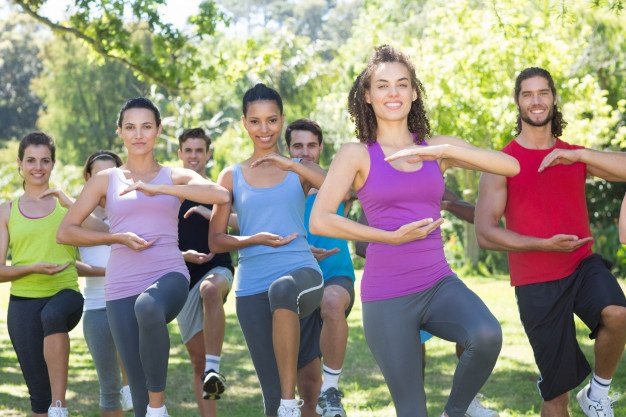The term "chi" refers to the source of life. It's known as "prana" in yoga, "life force of breath" in Pilates, and "consciousness teachings of the genesis of movement" according to Feldenkrais.
While the spellings of Tai Chi Chuan, T'ai Chi Ch'üan, and Taijiquan vary due to different Eastern and Western dictionaries, the pronunciations are all the same. "Tai" is pronounced like "tie" in English, and "chi" is pronounced like "cheese," but without the final "s."
History
Tai Chi is a Chinese martial art. According to one legend, the emperor Yang awoke one morning in his bedroom after a sleepless night during a time when his country was at war. He gazed out the window at the scenery below when the window shutters were opened and the curtains were drawn.
He witnessed a struggle between a snake and a crane. The snake walked slowly and cautiously on the ground, and because it is long and has a low center of gravity, it had the benefit of covering a big area.
The crane did not flee, but instead expanded its wings and danced around the snake in a balletic manner. Both creatures advanced in slow motion and neither struck with a sharp attack.
The discipline of Tai Chi was adopted into the realm of martial arts to underline the Asian emphasis on slow, deliberate, meditative movement that becomes more defensive — rather than attacking — as a result of this observation of the natural world of animals. This is why, unlike some other Asian martial arts disciplines, Tai Chi is not practiced hastily or aggressively.
Few health benefits of Tai chi
Prevents falls
Numerous recent high-quality research studies have repeatedly shown that Tai Chi is useful in reducing the risk of falling and preventing falls.
This is because Tai Chi entails:
A shift in your weight-bearing, weight-transfer, and base of support
Participants may be required to take a larger or smaller step, or even stand on one leg. The intended weight redistribution creates challenges to improve balance.
Clearance at the toes
Participants are constantly urged to take a step with their toes pointed up towards themselves during Tai Chi lessons, landing with their heels first. This aids in the development of excellent walking habits by strengthening the muscles that prevent the toes from snagging on the floor, which can lead to falls.
Change in direction
In Tai Chi sessions, participants move forward, backward and sideways. These are the instructions needed for everyday actions such as hanging clothes on the line, moving along the kitchen bench to complete jobs, and taking a step backward in busy settings. The ability of the body to adjust to directional shifts improves with repeated practice.
Leg muscle strength is improved.
Most motions in a Tai Chi lesson are done standing up, occasionally even with a mini-squat. It's a low-intensity lower-limb workout in and of itself to finish the session.
Improves mental concentration, visualization, and coordination.
Because Tai Chi movements are not instinctive, they will take some time to master and may feel strange at first. To perform, one must concentrate on studying the movements, then visualize and coordinate the arms and legs. In our latter years, this can aid in the training or maintenance of mental focus, as well as the ability to visualize and coordinate movements.
It aids in the reduction of blood pressure.
People with high to normal blood pressure showed a substantial decrease in blood pressure after exercising 50 minutes of Tai Chi three times a week for 12 weeks, according to research. A beneficial influence on blood pressure can have a cascading effect on cholesterol levels and overall cardiovascular health. Another advantage of Tai Chi for the elderly is that it improves balance.
Reduces the risk of fractures by preventing bone demineralization.
Regular exercise is one of the most effective strategies to build your bones and prevent osteoporosis. Loading strengthens bones, and Tai Chi includes motions that demand the body to bear weight and hold its weight in various situations. Even if you currently have osteoporosis, exercise can help you retain your bone mass and prevent or halt additional bone loss. Fractures are less likely if your bones are stronger.
Reduces anxiety and regulates stress.
The effects of abdominal breathing, chest expansions, and slow, deep breaths are immediate. This can aid in the reduction of tension and anxiety, making it a useful kind of exercise for both our physical and emotional well-being.
Low-risk, easy-to-access, and low-cost
Tai Chi courses are designed to be low- to moderate-intensity, making them suitable for most elders also.
To learn more about this topic, visit Pranalink.com
